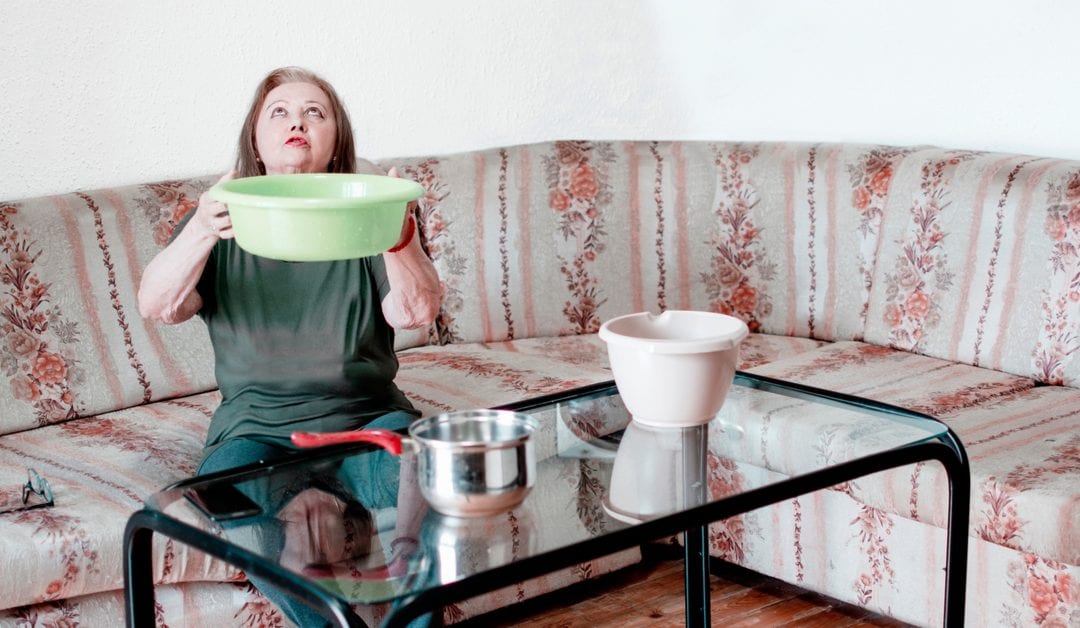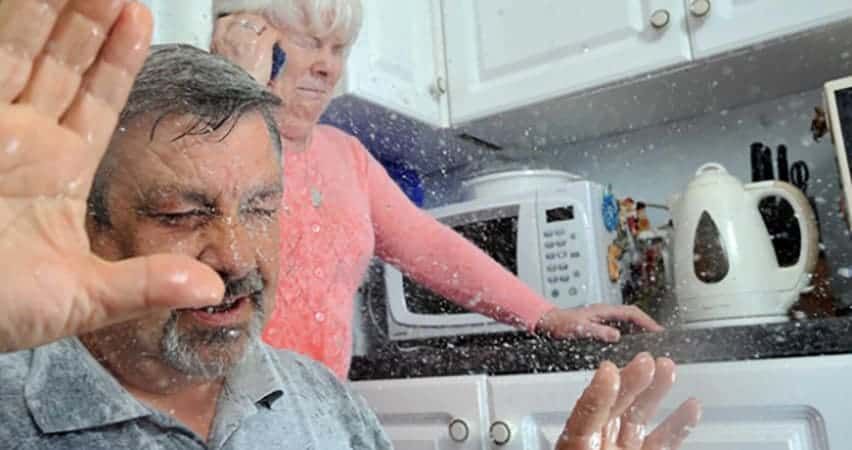Effective Techniques to Fix Plumbing Issues in Older Homes
Effective Techniques to Fix Plumbing Issues in Older Homes
Blog Article
Have you been trying to locate info concerning Plumbing Issues in Older Properties and How to Fix Them?

Older homes frequently come with beauty, personality, and background, however they can additionally bring a host of pipes problems. Whether you're managing aging pipelines, low tide pressure, or leakages, knowing just how to deal with these typical issues is critical to maintaining a risk-free and functional home. In this guide, we'll explore the regular pipes obstacles dealt with by older homes and provide practical solutions to keep your plumbing in leading shape.
Understanding Common Plumbing Issues
Aging Pipelines
One of one of the most usual concerns in older homes is aging pipelines. Depending upon the age in which your home was developed, the pipelines might be made from materials that have actually deteriorated over time, such as galvanized steel, cast iron, and even lead. These products can wear away, end up being breakable, or create leakages, causing water damages and prospective carcinogen.
Low Water Stress
If you're experiencing low tide stress, maybe because of mineral deposits, deterioration inside the pipelines, or old components that are no longer working effectively. This can be a major hassle, specifically in locations like showers and sinks.
Dripping Pipelines
Leakages are an additional frequent concern in older homes, typically caused by rusty or damaged pipes. Even little leaks can bring about significant water damage, mold development, and enhanced water bills if not resolved quickly.
Out-of-date Components
Obsolete pipes components such as taps, commodes, and showerheads not just look old but may also be less effective, prone to leaks, or incompatible with contemporary plumbing requirements.
Pipe Rust
Deterioration is an usual trouble in older pipelines, particularly those made from galvanized steel or cast iron. Corroded pipes can limit water circulation, create staining, and at some point lead to leaks or pipe bursts.
Examining the Problem of Your Plumbing
Examining Visible Pipes
Beginning by examining any type of visible pipes in your house, such as those in cellars, crawl spaces, or under sinks. Seek indicators of corrosion, leaks, or corrosion, which can show underlying concerns.
Looking for Leaks
Check for leakages by checking areas around faucets, toilets, and under sinks. You can also monitor your water meter before and after a duration of no water utilize to identify surprise leakages.
Water High Quality Testing
Older pipes can affect the top quality of your water. Conduct a water high quality examination to look for impurities such as lead, rust, or various other pollutants that may be presented by maturing pipes.
Solutions for Common Pipes Issues
Changing Aging Pipes
If your home has old, weakening pipelines, take into consideration replacing them with modern materials like copper or PEX. This can be a significant financial investment, yet it will prevent future concerns and enhance the security and reliability of your pipes system.
Repairing Low Tide Pressure
To fix low tide stress, begin by cleansing or replacing old fixtures and eliminating mineral buildup in the pipelines. If the trouble continues, it may be needed to replace areas of corroded pipelines.
Fixing and Replacing Leaking Pipelines
For little leakages, you can utilize pipe clamps or epoxy putty as a short-term repair. However, it's ideal to replace dripping pipes completely to avoid additional damages.
Upgrading Components
Upgrading old components to modern, water-efficient designs can enhance your home's pipes performance and minimize water consumption. Try to find components with the WaterSense label for the very best performance.
Handling Pipeline Rust
If your pipelines are corroded, replacing them with corrosion-resistant products like copper, PVC, or PEX is the best option. Normal evaluations and water top quality upkeep can assist avoid further rust.
When to Call a Specialist
While some pipes problems can be managed with do it yourself solutions, there are times when it's best to employ a professional. If you're taking care of significant leaks, considerable corrosion, or are unclear about the condition of your pipes, a licensed plumber can supply professional assessment and repair service.
Preventive Maintenance Tips
Regular Inspections
Frequently inspect your pipes system for signs of wear and tear. Catching concerns early can prevent pricey repairs down the line.
Water Stress Guideline
Ensure your water pressure is within the advised variety to avoid emphasizing your pipes and components. A plumbing technician can mount a stress regulatory authority if needed.
Water Quality Maintenance
Mount water filters or softeners if your water high quality is poor. This can protect your pipes and components from damages brought on by difficult water or pollutants.
Aggressive Pipe Substitute
If your home has older pipelines, take into consideration aggressive substitute before major issues occur. This can save you from emergency situation repairs and water damage.
Conclusion
Dealing with plumbing concerns in older homes needs a combination of watchfulness, preventive upkeep, and prompt upgrades. By recognizing the typical challenges and knowing when to seek specialist aid, you can guarantee your pipes system remains practical and trusted for many years to find.
Common Plumbing Issues in Older Homes and How to Fix Them
Owning an older home in Australia comes with its unique charm and a set of challenges, especially when it comes to plumbing. The Sunshine Coast has many older properties that can harbour plumbing problems that aren t just inconvenient but potentially costly. Here s a look at some common plumbing issues in older homes and expert advice on how to handle them.
Outdated Piping Materials
Many older homes were built with galvanised steel, cast iron, or even lead pipes, materials that are far from ideal by today s standards. Galvanised pipes are prone to corrosion and clogging, while lead pipes pose serious health risks.
How to Fix:
Replacing old pipes is a job for a professional. Upgrading to copper or PVC piping not only enhances water quality and flow but also increases the property s safety and value. If you suspect your home has outdated materials, a licensed plumber can conduct a thorough inspection and recommend the best course of action.
Corrosion and Pipe Degradation
Over time, exposure to water and minerals can cause pipes to corrode, leading to leaks, bursts, and water contamination. Corrosion is especially common in homes over 50 years old.
How to Fix:
Regular inspections can catch early signs of corrosion. If corrosion is found, the affected section of piping often needs to be replaced. For homes with extensive corrosion, a complete plumbing overhaul might be necessary. It s crucial to consult with a plumbing expert to understand the extent of the issue.
Tree Root Intrusion
Older neighbourhoods usually have mature trees whose roots can intrude into pipe lines, causing blockages or damage. This is particularly problematic for sewer lines, where roots seek out water sources.
How to Fix:
A plumber can use a specialised camera to inspect sewer lines for root intrusion. If roots are a problem, methods like root cutting or hydro-jetting can clear the obstruction. In severe cases, part of the pipe may need replacing. Consider root barriers around the piping to prevent future issues.
Inadequate Water Pressure
Low water pressure in older homes can be due to various factors, including corroded water lines, sediment build-up in pipes, or outdated fixtures.
How to Fix:
First, check if the low pressure is isolated to one area or throughout the house. Replacing old fixtures can sometimes resolve the issue. However, if the problem is more widespread, it might be due to sediment or corrosion. Flushing the system or replacing the affected pipes usually restores normal pressure. Again, a professional assessment is advisable.
Outdated Fixtures
Older homes often feature fixtures that are not only visually dated but functionally inefficient. This includes everything from toilets and taps to showerheads and washing machine hoses.
How to Fix:
Updating these fixtures can improve both water efficiency and the aesthetic appeal of your home. Modern fixtures are designed to conserve water, which can significantly reduce your water bill and lessen your environmental impact.
Conclusion
Maintaining the plumbing in an older home requires a proactive approach. Regular checks and updates are key to preserving these beautiful properties. If you re facing plumbing issues in your older home, it s best to call on experienced professionals like Green & Gold Plumbing & Gas. With the right expertise, even the most daunting plumbing problems can be resolved, ensuring that your home s character is maintained while its functionality is enhanced.
https://gandgplumbing.com.au/common-plumbing-issues-in-older-homes-and-how-to-fix-them/

Hopefully you enjoyed our article on Main Plumbing Issues Found in Old Houses. Thanks a lot for spending some time to browse our blog post. Do you know somebody who is fascinated about the topic? Please feel free to promote it. We cherish reading our article about Common Plumbing Problems in Older Homes.
Estimate Free Report this page